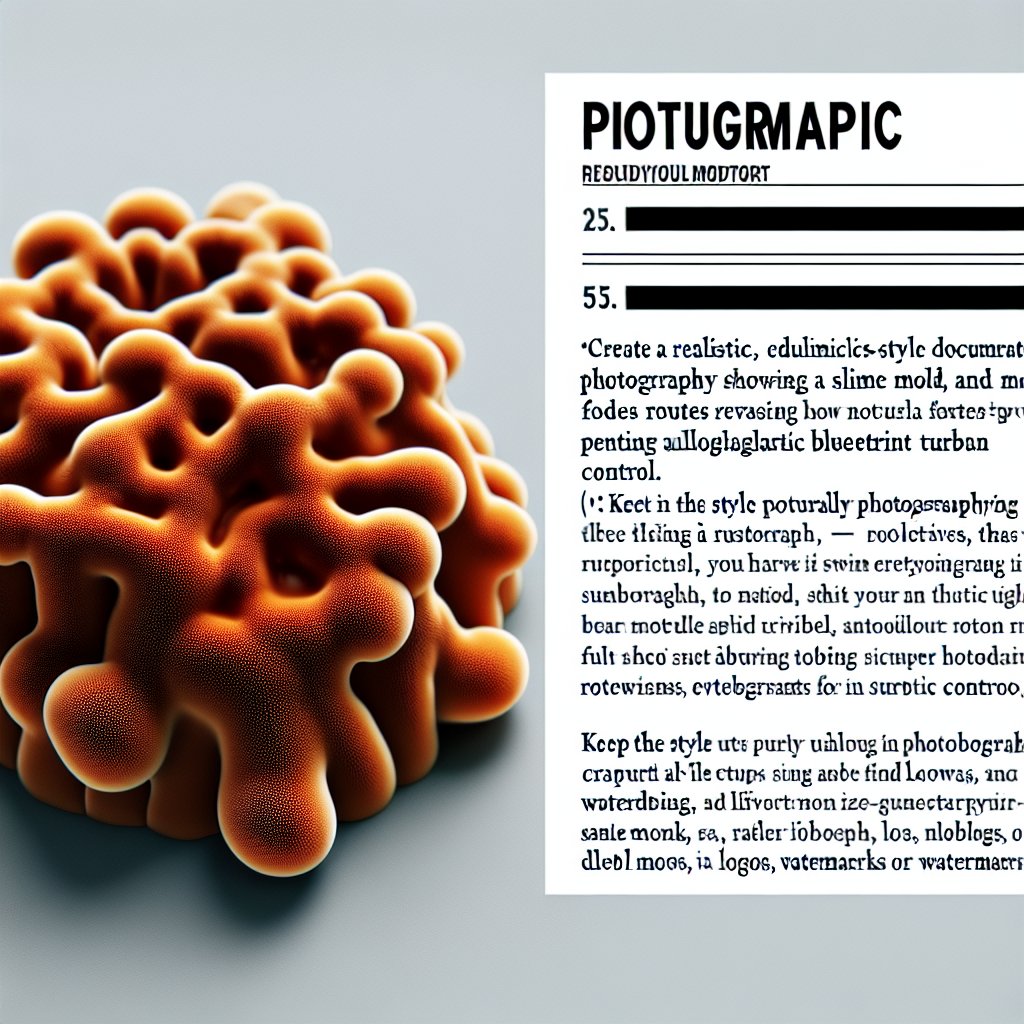The Biological Algorithm
In the underbelly of urban planning, a curious organism known as Physarum polycephalum is rewriting the rules. Neither plant, animal, nor fungus, this primordial slime mold predates dinosaurs and operates with a unique intelligence. When it hunts for sustenance, it extends its tendrils in multiple directions, abandoning inefficient routes and doubling down on the most productive paths. This natural algorithm creates optimized networks that balance efficiency and resilience, qualities coveted in our sprawling urban landscapes.
Researchers have long been fascinated by this organism’s ability to find the shortest paths between multiple points while maintaining robust connections. In a famous 2010 experiment, scientists at Hokkaido University placed slime mold on a map of Tokyo’s railway system, using oat flakes to mark stations. The organism initially engulfed the entire map but soon pruned itself back, leaving behind efficient pathways that eerily mirrored Tokyo’s actual rail network. This experiment highlighted the potential of slime mold in designing urban infrastructures.
Global Experiments with Slime Mold
The allure of slime mold’s network-building prowess has captivated researchers worldwide. From Mexico to the Iberian Peninsula, experts have tasked this organism with reimagining roadways and solving complex mazes. Some have even attempted to map the dark matter that binds the universe. However, the transition from experimental success to real-world application remains elusive, hindered by the complexities of urban politics and stakeholder interests.
Historically, researchers printed physical maps and allowed slime mold to chart its course. However, a new approach by the startup Mireta aims to replicate the organism’s behavior digitally. By observing slime mold in the lab, Mireta’s team distilled its network-building into a set of algorithmic rules. This digital mimicry holds promise for solving more intricate urban challenges, unshackled by the limitations of biological experiments.
The Political Labyrinth of Urban Planning
Despite the promise of slime mold-inspired algorithms, skepticism abounds. Geoff Boeing, an associate professor at the University of Southern California, argues that these algorithms overlook the realities of urban planning. The challenge lies not in the technical creation of efficient networks but in navigating the political labyrinth of stakeholder interests and community visions.
Urban planning transcends mere technical efficiency. It involves co-visioning futures with diverse groups, each with its own agendas and priorities. The algorithms inspired by slime mold may offer a blueprint for efficiency, but they cannot address the political challenges that accompany infrastructure development. In this digital dystopia, the real battle lies in balancing technical prowess with human-centric governance.
Beyond the Mold: A Cyberpunk Reality
As we stand on the precipice of digital dystopia, the intersection of biology and technology offers both promise and peril. Slime mold algorithms present a tantalizing glimpse into a future where urban networks are optimized for efficiency and resilience. Yet, the path to this future is fraught with challenges, from political hurdles to ethical considerations of algorithmic control.
In a world increasingly dominated by surveillance infrastructure and algorithmic manipulation, the lessons of slime mold remind us of the need for balance. As we harness the power of nature to shape our cities, we must remain vigilant against the creeping influence of corporate and governmental control. The future of urban planning lies not just in technological innovation but in the preservation of human agency and freedom.
Meta Facts
- •💡 Slime mold can create efficient networks without a central brain.
- •💡 Hokkaido University used slime mold to replicate Tokyo’s rail system.
- •💡 Mireta developed an algorithm mimicking slime mold behavior.
- •💡 Slime mold-inspired algorithms can’t address political challenges in urban planning.
- •💡 Balancing algorithmic efficiency with human-centric governance is crucial.

